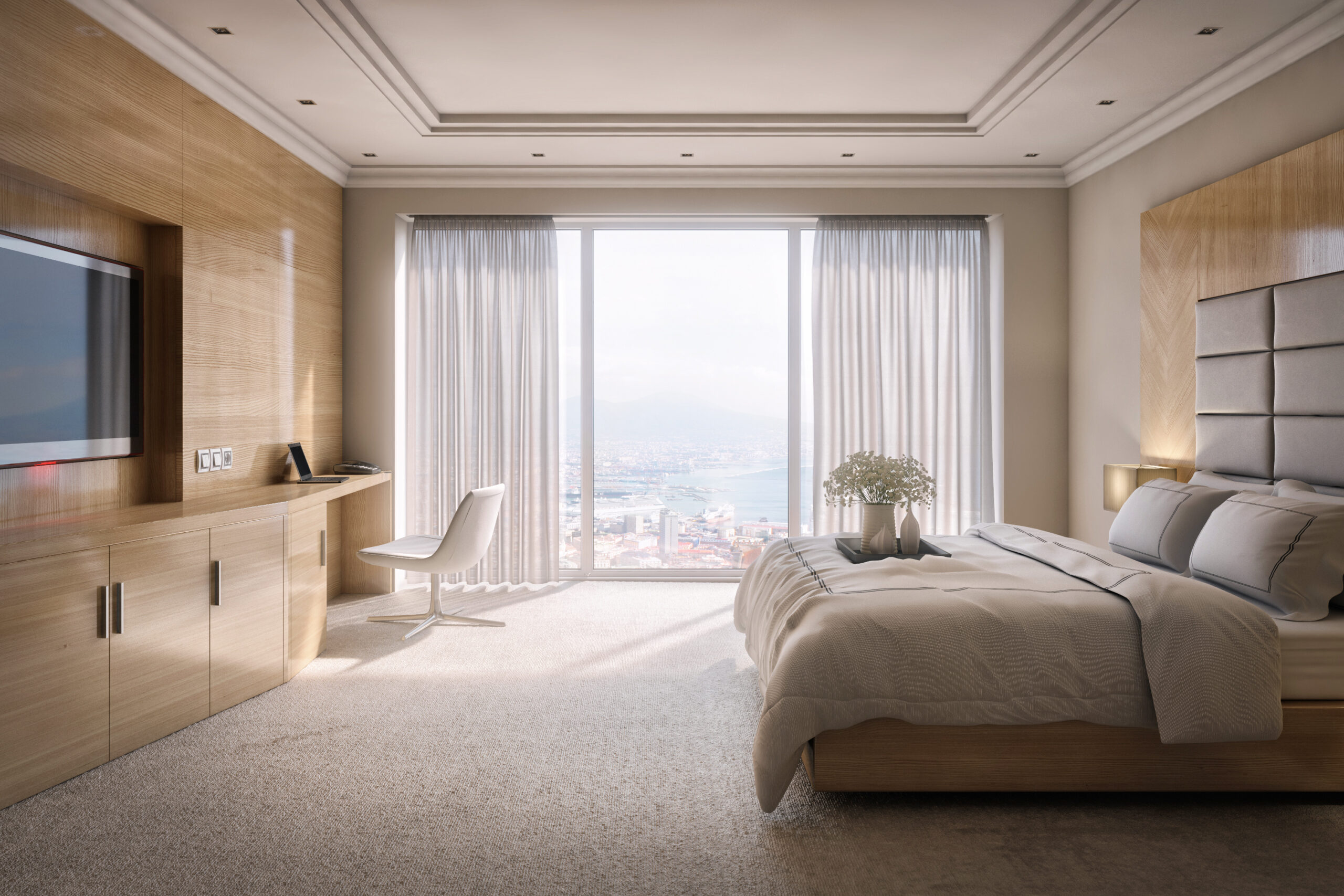Revolutionizing Luxury Hotel Inventory Audits with Computer Vision
Computer vision is revolutionizing inventory audits in luxury hospitality, boosting accuracy, reducing costs, and enhancing the guest experience.


Transforming Inventory Audits in Luxury Hospitality: The Rise of Computer Vision
The hospitality industry is undergoing a seismic shift in operational efficiency, driven by advancements in artificial intelligence. For luxury hotels and resorts, where guest expectations for flawless service intersect with the complexities of high-value inventory management, computer vision has emerged as a transformative solution. By automating inventory audits with 99%+ accuracy, reducing labor costs by 10–15%, and enabling real-time stock monitoring, this technology is redefining how premium establishments manage mini-bars, beverage reserves, and critical supplies. From eliminating manual counting errors to integrating seamlessly with property management systems, computer vision ensures that luxury brands can maintain their reputation for excellence while optimizing backend operations.
The Hidden Costs of Traditional Inventory Audits in Luxury Settings
Manual Processes and Operational Inefficiencies
Luxury hotels traditionally rely on labor-intensive inventory audits, where staff physically count mini-bar items, wine cellars, and perishable goods. A 500-room resort, for example, may require 40+ hours per week for mini-bar audits alone, with teams manually logging 20–30 SKUs per room. This approach not only strains resources but also introduces inconsistencies: human counters exhibit error rates of 4–8% for complex items like vintage wines or specialty spirits. The financial impact compounds through overstocking (wasting 12–18% of beverage budgets) and stockouts (costing up to $15,000 monthly in lost upsell opportunities).
Guest Experience Disruptions
In high-end environments, audit-related intrusions conflict with privacy expectations. A 2024 survey revealed that 68% of luxury guests find staff entering rooms for inventory checks disruptive, particularly during rest periods. Manual methods also delay billing accuracy—a critical pain point when 92% of disputes arise from perceived mini-bar charge errors.
Computer Vision: Architecting Precision in Inventory Management
Core Technical Infrastructure
Modern systems like Fari Lens employ a multi-layered architecture:
- Data Capture Layer: Mobile devices or fixed cameras collect high-resolution images of mini-bars, liquor cabinets, and storage areas.
- Processing Engine: Convolutional Neural Networks (CNNs) trained on 100,000+ labeled images identify SKUs, detect fill levels (±2% accuracy for liquids), and flag missing items.
- Integration Hub: APIs sync with Opera PMS, Micros, and other hotel systems, automating billing and replenishment workflows.
For champagne inventory, models distinguish between 2012 Dom Pérignon and 2015 vintages by analyzing bottle shape, label fonts, and capsule details—capabilities impossible with RFID or barcode systems.
Real-Time Analytics and Predictive Insights
Beyond counting, vision algorithms analyze consumption patterns. A Maldives resort reduced champagne waste by 22% by correlating stock data with guest nationality and event calendars. Machine learning forecasts predict restocking needs 72 hours in advance, minimizing紧急 orders that incur 30–50% cost premiums.
Luxury-Specific Applications Redefining Operational Standards
Mini-Bar Management Reinvented
Five-star properties using Fari Lens report:
- 98% Reduction in audit time: Rooms scanned in 45 seconds vs. 8 minutes manually
- Zero Dispute Incidents: Time-stamped visual证据resolves charge questions instantly
- Dynamic Pricing Integration: Sensors detect premium item consumption (e.g., $350 cognac), triggering automated upselling prompts via in-room tablets
Sommelier-Grade Beverage Tracking
For wine cellars storing $2M+ inventories, computer vision:
- Authenticates labels against counterfeit databases (blocking $280K/yr in fraud)
- Measures ullage levels in opened bottles, automatically scheduling reuse in bartender specials
- Generates 3D cellar maps for optimal vintage rotation, reducing spoilage by 17%
Strategic Integration with Luxury Ecosystems
IoT-Enabled Supply Chains
Leading resorts connect vision systems to smart dispensing equipment. When a $800 bottle of Macallan Lalique drops below 25%, sensors:
- Auto-replenish via blockchain-tracked distributors
- Update mixology menus with available premium stocks
- Alert concierge to suggest whiskey tastings to high-spend guests
Staff Empowerment Through Augmented Reality
Maintenance teams using AR glasses overlay real-time inventory data during inspections. Viewing a minibar, they see:
- Last restock date
- Items consumed since guest check-in
- Allergy alerts for items needing replacement
Quantifiable ROI for Asset-Intensive Properties
A 2024 analysis of 120 luxury hotels revealed:
| Metric | Pre-CV Average | Post-CV Improvement |
|---|---|---|
| Inventory Shrinkage | 6.8% | 0.9% |
| Audit Labor Costs | $18.2k/month | $4.1k/month |
| Guest Dispute Resolutions | 14 days | 2.3 hours |
| Upsell Conversion | 11% | 19% |
Properties recovered implementation costs in 5–7 months through waste reduction and labor optimization.
Future Innovations on the Horizon
Multi-Modal Learning for Rare Items
Emerging models combine visual data with spectral analysis to manage ultra-premium assets:
- Infrared scans verify Pappy Van Winkle bourbon authenticity
- Hyperspectral imaging detects cork taint in $10K+ wines pre-opening
Self-Optimizing Inventory Networks
By 2026, AI directors will orchestrate stock across resort networks. If a Dubai property’s Dom Ruinart stock dips, the system reroutes bottles from a Paris partner hotel, considering:
- Guest loyalty tiers
- Upcoming events
- Sustainability metrics (carbon footprint per bottle)
Implementing Vision-Driven Audits: A Strategic Roadmap
For C-level executives evaluating this transition:
-
Phase 1: Pilot Program
- Select 50–100 rooms for mini-bar CV deployment
- Train staff on mobile app workflows (4–6 hours/session)
- Integrate with 1–2 core systems (e.g., PMS, billing)
-
Phase 2: Full Property Rollout
- Install fixed cameras in liquor storage, housekeeping carts
- Develop custom models for unique assets (e.g., caviar tins, designer toiletries)
- Establish API connections to procurement/purchasing platforms
-
Phase 3: Ecosystem Optimization
- Implement predictive analytics for F&B menu planning
- Develop guest-facing transparency portals showing real-time consumption
- Negotiate vendor contracts based on CV-derived demand forecasts
Conclusion: Vision as the New Standard of Luxury
As ultra-high-net-worth travelers demand perfection, computer vision transitions from competitive edge to operational necessity. By automating the invisible yet critical task of inventory audits, luxury brands free resources to enhance visible touchpoints—whether training sommeliers or designing immersive guest experiences. The technology’s true value lies not merely in counting bottles, but in preserving the art of hospitality through flawless execution behind the scenes. Forward-thinking general managers now recognize:

